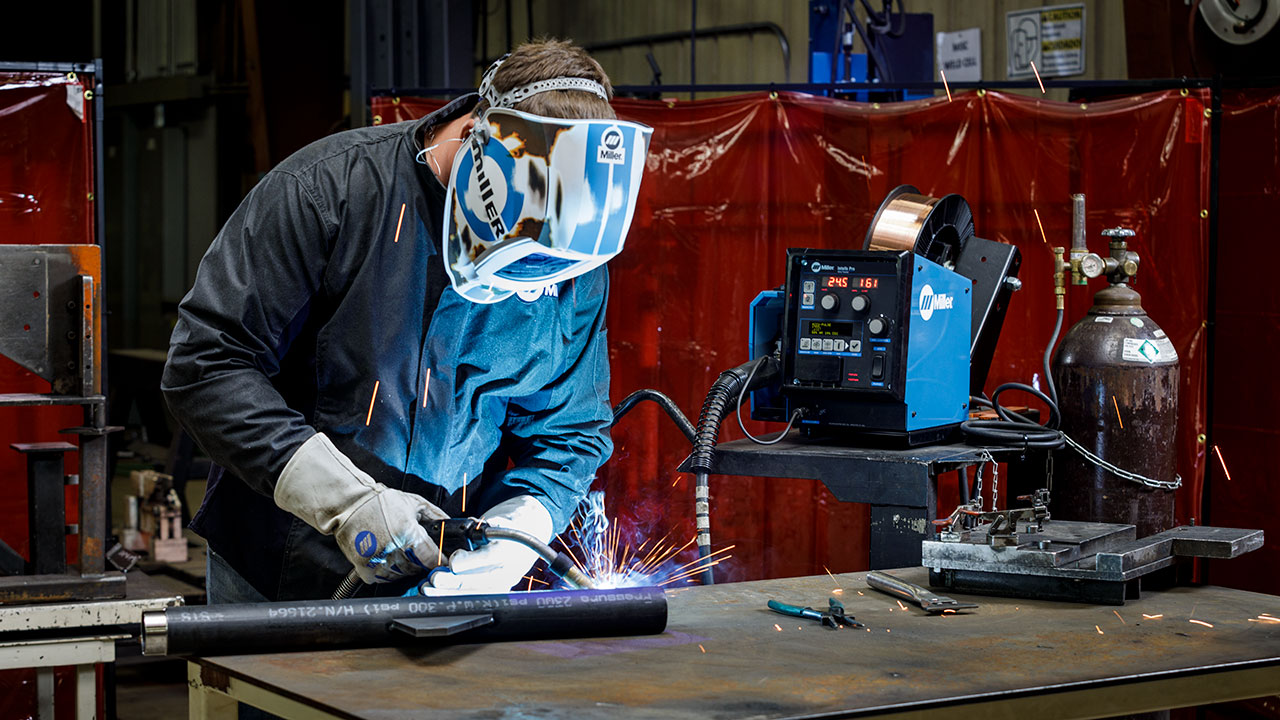The Ultimate Overview to Welding WPS Procedures: An Extensive Summary for Welders
In the intricate world of welding, Welding Procedure Specs (WPS) offer as the backbone of ensuring high quality, uniformity, and safety in welding procedures. Comprehending the subtleties of developing, carrying out, and checking WPS treatments is necessary for welders seeking to raise their craft and fulfill sector requirements. As we look into the numerous components of a WPS and explore the intricacies of certification and qualification, we will certainly discover the important function these treatments play in the world of welding. Allow's start a journey to unwind the intricacies and relevance of WPS procedures in welding practices.
Importance of WPS Procedures
Comprehending the importance of Welding Procedure Requirements (WPS) procedures is essential for guaranteeing the top quality and integrity of welded frameworks. WPS treatments function as a roadmap for welders, laying out the required steps, criteria, and products needed to achieve an audio weld. By sticking to WPS standards, welders can ensure uniformity in their work, resulting in structurally sound and reputable welds.
Among the key reasons WPS procedures are vital is their duty in preserving weld quality and honesty. Complying with the specified welding specifications and methods laid out in the WPS assists protect against defects such as porosity, cracking, or insufficient fusion, which can endanger the strength and resilience of the weld. Additionally, WPS procedures are vital for ensuring conformity with sector criteria and codes. By following recognized WPS guidelines, welders can demonstrate that their job meets the essential requirements for security and top quality, giving assurance to customers, examiners, and regulatory bodies. In significance, the relevance of WPS treatments can not be overemphasized, as they are basic to attaining constant, top notch welds that fulfill sector requirements and specs.

Components of a WPS
A Welding Treatment Requirements (WPS) typically consists of important components that detail the details demands for executing a weld, making sure consistency and high quality in the welding process. The key parts of a WPS consist of important variables such as base steels, filler steels, preheat and interpass temperature levels, welding procedures, shielding gases, welding placements, and post-weld heat treatment requirements.
Base steels describe the products being joined, while filler metals are utilized to fill up the void between the base metals during welding. Preheat and interpass temperature levels are essential for controlling the warmth input and avoiding issues like splitting or distortion. The welding procedure lays out the certain technique to be used, whether it's gas metal arc welding (GMAW), secured steel arc welding (SMAW), or another method. Shielding gases secure the weld swimming pool from atmospheric contamination. Welding positions define the orientations in which welding can be carried out. Post-weld warmth therapy may be needed to alleviate tensions and enhance the weld's homes. A detailed understanding of these elements is essential for developing a efficient and extensive WPS.

Certification and Certification
Having actually established the vital components of a Welding Procedure Spec (WPS), the emphasis currently shifts towards the vital aspects of credentials and accreditation in welding practices.

Certification, on the various other hand, is the official acknowledgment click over here now of a welder's certifications by an appropriate certification body or company. Welding certifications are normally based on the details welding procedures, products, and settings a welder is qualified to function with. Holding a valid welding accreditation demonstrates that a welder meets market requirements and is skilled to execute welding jobs to the required requirements.
Developing a WPS
To establish a Welding Treatment Requirements (WPS) that meets sector requirements, careful consideration of welding processes, products, and operational parameters is essential. The first action in creating a WPS is to determine the welding procedure to be made use of, such as gas metal arc welding (GMAW) or secured metal arc welding (SMAW)

Carrying Out and Monitoring WPS
Upon wrapping up the detailed Welding Procedure more info here Requirements (WPS) that carefully information welding processes, products, operational parameters, and top quality assurance actions, the emphasis moves to effectively applying and monitoring the well established procedures. Implementation includes making certain that all welders associated with the task know with the WPS and follow it carefully during the welding process. This requires offering ample training and supervision to ensure adherence to the defined procedures. Keeping track of the WPS involves continual oversight to confirm that welding tasks line up with the documented specs. Examinations, testing, and quality control measures are necessary components of the monitoring process to recognize any issues or discrepancies promptly. Normal audits and evaluations of the welding procedures assist in keeping uniformity and quality throughout the project. Effective application and tracking of the WPS are vital for making certain the honesty, toughness, and safety of the welded joints, ultimately contributing to the total success of the welding task.
Conclusion
Finally, understanding and following Welding Procedure Specs (WPS) is crucial for welders to make sure quality, uniformity, and safety in their job. By understanding the parts of a WPS, acquiring correct certifications and certifications, creating in-depth procedures, and carrying out and checking them properly, welders can boost their abilities and proficiency in welding practices. Sticking to WPS procedures is important for generating top notch welds and meeting industry requirements.
In the elaborate globe of welding, Welding Procedure Specifications (WPS) offer as the backbone of making sure quality, uniformity, and security in welding operations. The welding process describes the specific strategy to be used, whether it's gas steel arc welding (GMAW), secured metal arc welding (SMAW), or an additional technique.To create a Welding Procedure Spec (WPS) that fulfills industry requirements, mindful consideration of welding processes, products, and functional parameters is crucial. The first step in producing a WPS is to recognize the welding procedure to be utilized, such as gas metal arc welding (GMAW) or secured metal arc welding (SMAW)Upon completing the thorough Welding Procedure Specification (WPS) that diligently information welding processes, materials, operational parameters, and quality guarantee steps, the focus moves to successfully implementing and keeping an eye on the well-known treatments.